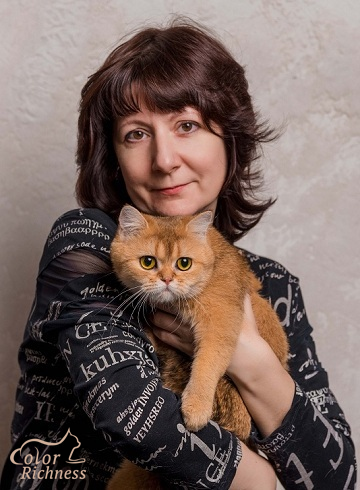I mean their visual absence. The cats are called in different ways: folded, adherent, stuck, earless, but all these are about the same Scottish Fold breed. The progenitor of all Scottish Folds was Susie, a domestic cat who lived with a Scottish farmer. Then her descendant ended up in the cattery of British cats, the breeders of which decided to found a new cat breed. But they faced several problems.

The decision to make folded ears a distinctive feature of the breed and then pass it on to the descendants (not letting them get lost) led to the fact that breeders worked to consolidate this phenomenon in different directions. Geneticists have revealed that the Fd (Folder) gene is responsible for folding, which is found in both Scottish Folds and Scottish Straights. The only difference is that in the former it is dominant F, and in the latter, it is recessive f. And when two folds were crossed, not only the mutation gene itself accumulated but also its negative properties. The offspring with such mating turned out to be sick and even unviable. Therefore, Folds were mated with British, and then with Persians, Exotics, American Shorthair cats, until the number of Scottish Straights became large enough for mating Folds and Straights (Scottish Straight).
The appearance of a mutation
Scottish Fold kittens are always born with equally straight ears. They look ordinary until the age of 14-24 days, then the breeder sees that some of the kittens' ears begin to fold. At this time, the ear cartilage can develop in a wide variety of ways. Their ears take on their final appearance only at about 1.5 months. That is why it's better not to reserve Scottish Folds before this age. Folded ears kittens aren't different from their straight-eared counterparts, except for the folded ears.
This mutation manifests itself very well when mating a Fold with a Straight, i.e. a homozygous individual with a heterozygous one.
Folded ears can be of varying degrees. Ears can
- make one whole with the head, in this case, they are called stuck;
- they can be slightly raised as if the kitten raised them on purpose in order to better hear something;
- they can be folded in the form of a house.
What affects the degree of fit?
Calcium intake has nothing to do with ear fit. First, the cartilage tissue influences, it's not about bone; second, the shape of the ears is laid down genetically, so the certain shape fully depends on the genetic combinations. And all these combinations have not yet been studied equally well by geneticists.
We can confirm that the well-known folding gene is not the only factor influencing the shape and fit of ears; there're many other modifying genes that can enhance or, conversely, negate
the effect of the main gene. This complicates the work of breeders who strive to improve the breed and achieve better results.
Experienced breeders carefully monitor the interaction of genes in different litters and exclude from mating the animals that have a modifier gene that is inconvenient for breeding.
It must be remembered that the shape of the ears is determined at the genetic level. It's obligatory for a father and mother to have different ears (fold / straight). If you decide to buy a purebred cat, then you need to contact an officially registered cattery and be sure to ask to show a photo of the kitten's father and mother.





